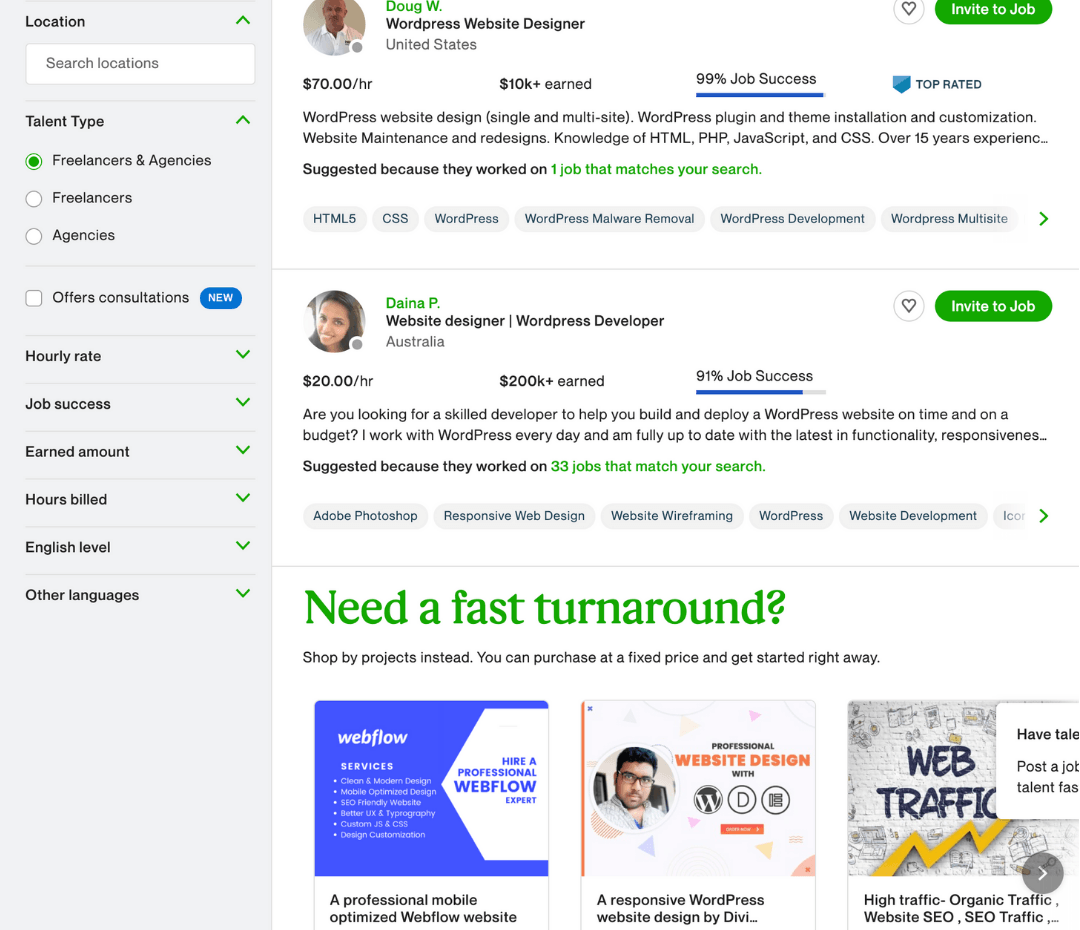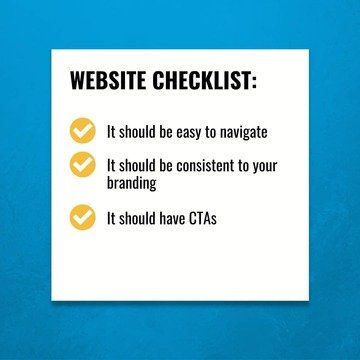Everything matters when it comes to SEO
When we talk about SEO, Google is the “S-E” that usually comes to mind.
“While it’s true that, in order to be considered truly optimized for SEO, sites need to load quickly, work well on mobile, maintain a valid SSL certificate, and have quality content, there is also a local component that can help a business improve its visibility in search engine results pages (SERPs).”
How to Keep Your Websites Ready for Google Updates
By Aaron Pitre on July 16, 2019
When we talk about SEO, Google is the “S-E” that usually comes to mind. For over twenty years, the search behemoth has been a pioneer, unequivocal authority, and powerful gateway to content on the web. To rank well on Google is to be the owner of prime real estate in the internet’s best neighborhood.
Google’s first confirmed update (a “ mix of algorithm changes and major index refreshing ” named ‘Boston’) was released in February of 2003. And since then, the search dynamo has continually released updates aimed at refining search results so users can better find the information, products, and services most relevant to them. And while some updates have been ambiguous or cryptic in nature, there is a clear ‘method to Google’s madness’ that we will discuss in this blog.
As you build sites for your clients’ and optimize them for SEO, we hope this blog will help you keep from being caught off guard by the next Google update (of which there are many released each year). And most importantly, we want you to use this information to reap bigger rewards for your SEO efforts –– with higher rankings.
Google Updates: Greatest Hits
To understand Google’s motives, we need to revisit a bunch of the major updates they’ve released, identify their purposes, and make a note of any recurring trends. From there, you will begin to see criteria that should be given consideration as you build and update websites.
Seeing the Trends
From the beginning (and with a few exceptions, as we’ll discuss later), the bulk of Google’s major updates can be placed into one of five categories: speed, mobile-friendliness, security, content, and local. So below, we’ll discuss each category, list major updates that apply to them, and cover the best practices that will allow you to remain ‘at the ready’ for updates.
1. Content
Content-focused major updates:
- Feb 2011 – The Panda Update – focused on stopping sites with poor quality content from ranking well.
- Jan 2012 – the Top Heavy Update – focused on stopping sites ‘top heavy’ with a lot of ads from ranking well.
- Aug 2012 – The Pirate Update – focused on preventing sites with copyright infringements from ranking well.
- Sep 2012 – The EMD Update – focused on stopping sites from ranking well on keywords alone.
- Jun 2013 – The Payday Update – focused on improving search results for inquiries that produce spam.
- Sep 2013 – Google Hummingbird – a new search platform focused on the meaning of words.
- July 2014 – The Pigeon Update – focused on improving local results related to traditional web ranking signals.
- Jun 2016 – The Google RankBrain Algorithm – focused on using a machine-learning system to filter results.
- August 2018 – The Medic Update – a broad core update that had the biggest impact on service providers such as medical professionals.
The lion’s share of major updates have focused on content, and we think it would be safe to assume that more content-focused updates are likely to roll out in the future. Therefore, one of the best ways that businesses can stay Google-ready is by making quality website content a top priority.
Content Best Practices: If you take a look at the sites that were most greatly impacted by the Medic Update, you’ll get a big hint from Google to inform first and sell second . Any business, regardless of offerings, should take the Medic Update as a call to action to go easy on the advertising and sales of products, and instead focus more on quality content and services. Remember the acronym E-A-T :
- E xpertise. Create content that highlights industry knowledge, informs people, and helps them.
- A uthority. Become a go-to resource for info by building a repertoire of valuable content that generates high-quality backlinks (more on that later).
- T rustworthiness. Earn customer confidence with quality content, sound business practices, and positive digital word-of-mouth.
Pro-tip: 90% of searchers haven’t made up their mind about a brand before starting their search (Status Labs, 2018). Good content can positively shape opinions.
2. Speed
Speed-focused major updates (and products):
- Jul 2018 – The Speed Update – Google begins using pagespeed as a ranking factor on mobile.
- Nov 2018 – Pagespeed update – Google begins using Lighthouse to power PageSpeed Insights.
An amazing website deserves to be seen by as many visitors as possible, as soon as possible. However, if that rich, engaging content takes too long to load, this will not be possible. Slow site speed can prove to be a big barrier to conversions. More than 50% of visitors will abandon a page if it takes longer than 3 seconds to load.
Site Speed Best Practices: As a general rule of thumb, it’s a good idea to look for ways to render content faster –– then keep doing it. For example(s), you can remove excessive code, compress files, remove render-blocking JavaScript, and optimize images by using the right files (for example, PNG vs JPEG); many of which Duda does automatically for you.
Don’t forget that site speed matters on every device so businesses should make sure to test it across desktop, tablet and mobile.
Pro-tip: Remember; nothing is fixed and final when it comes to site speed. Back in Ancient Internet , a 15-second loading time was seen as fast. The bar for site speed will continue to raise and sites will need to become faster and faster to keep up. Let this encourage you to make site speed optimization an ongoing process. On Duda, we’re continually updating our platform for faster content rendering and higher scores on Google’s Lighthouse Test.
3. Security
Security-focused major updates:
- Aug 2014 – HTTPS becomes a ranking signal on Google.
- Jul 2018 – Google begins marking all unencrypted sites as ‘ Not Secure. ’
At this point in time, site security should be a no-brainer for anyone who is building websites. We’ll even go as far as to say that no business (especially those with a viable eCommerce solution) should have an unencrypted website in 2019. Unfortunately, about 25% of websites that receive traffic are still unencrypted and remain vulnerable to attacks.
Security Best Practices – Google is the power behind the ‘HTTPS Everywhere’ initiative, penalizes sites that are unencrypted, and marks them ‘Not Secure’ for visitors in Google Chrome. The call to action could not be any clearer. Businesses need to encrypt their sites with an SSL certificate and make sure to renew it when it expires. Site vulnerability could and should be a non-issue on the web as there are many free and affordable options for site encryption available on the market today. At Duda, we encrypt all sites with free auto-renewing SSL certificates with just one click.
4. Mobile-Friendliness
Mobile-focused major updates:
- April 2015 – The Mobile-Friendly Update aka Mobilegeddon – gives mobile-friendly sites a rankings boost.
Mobile is the primary channel of engagement on the web, meaning the majority of visits to a business’ website will take place on mobile phones. Google knows this, and if you take your cues from them, you will agree that every business with an online presence should have a mobile experience that is just as good, if not better, than its desktop counterpart.
Mobile Best Practices – From here on out, it’s a good idea to apply a mobile-first perspective to web design . Make mobile UX your top priority and factor each of the previous three SEO factors into your client’s mobile experience, especially site speed which is a ranking factor on mobile.
Pro-tip: Make mobile your starting point for responsive design. On Duda, you can set the global design settings for mobile, adjust the mobile layout and opt to add or hide certain elements such as a click-to-call button on your client’s mobile experience.
5. Local
Local SEO-focused major updates:
- Aug 2017 – The Hawk Update – a change affecting local filters.
While it’s true that, in order to be considered truly optimized for SEO, sites need to load quickly, work well on mobile, maintain a valid SSL certificate, and have quality content, there is also a local component that can help a business improve its visibility in search engine results pages (SERPs). Here are a few things you should know that will help your small business customers rank higher.
Local Ranking Factors
According to a local ranking factors study from the University of California, the top local ranking factors on Google fall into 3 categories:
- Distance from center of search
- Organic rankings
- Reviews:
- Number of reviews with keyword.
- More than 0 reviews.
- Percentage of reviews with keyword.
- Number of reviews not responded to.
The Evolution of SERPs on Google
If you look at what Google is doing from a cause and effect perspective, you can think of each update as having an internal (or non- viewable) cause, whose visible effects show up on a SERP.
As local searches continue to rise steadily (likely due to the growing popularity of voice searches), local SEO is becoming increasingly important, and Google keeps transforming SERPs to better allow users to interact with local businesses directly from Google. This includes introducing new SERP elements such as:
- The Get In Line button, which allows restaurant-goers to place themselves in a virtual queue when dealing with restaurant wait times.
- The Reserve with Google expansion, which enables students to book lessons and enroll directly in courses.
- Making check-in/check-out times a part of local listings for hotels.
- Changes to Events that now make it possible for users to save an event, find additional dates/venues where the event is also taking place, and (in some cases) purchase tickets.
Local SEO Best Practices
Andrew Shotland, CEO of Local Search Guide, explains why reviews matter for local SEO
Local businesses can start by making sure that all business information is kept up-to-date (including location), getting as many positive reviews as possible on review sites such as Google My Business , G2Crowd and Yelp, and responding to them (see video above). Watch our Local SEO webinar with Andrew Shotland to learn even more local SEO tips and tricks.
Businesses should also look for ways to leverage Google to facilitate direct interaction with customers and increase traffic to their sites. This includes not only taking advantage of the aforementioned SERP elements, but also other Google content that you can control and/or influence such as ads, knowledge panel images, and content found in directories.
Pro tip: A whopping 70% of calls and driving directions are derived directly from Google. NAP (name, address, phone number) matters.
Bonus: Additional Ranking Factors
Backlinks – Over the years, several updates have been released placing an added focus on the quality of inbound links (such as the Penguin Update in April 2012), which to this day remains one of the strongest ranking signals on Google (and search engines in general). With quality links to their site from top-level domains, businesses can rank higher for certain keywords and improve their ranking power by establishing their sites as an authority.
Timeliness – Part of what makes content great is timeliness. Updating a business’ outdated content to make it current can positively impact its Google ranking within days, as evidenced by the Freshness algorithm (Jun 2010) and its various updates.
Schema – Schema helps businesses further optimize site content for web crawlers. For example, schema is how a business can influence knowledge graphs, whose collected information gets displayed in knowledge cards next to (or above) search results (see image below).
Seeing The Big Picture/Looking to the future:
Google is generally motivated by serving its users with the best search experience possible. A business should be motivated in similar ways. Think of SEO as an added benefit for highlighting quality services, good business practices, and making the effort to create the best possible user experience on a website.
Google wants you to be proactive in your efforts to make your client’s sites the best they can be; anything you can do to continually optimize them should be done –– whenever possible. Don’t be afraid to put new strategies to the test, evaluate them and make adjustments. That is what Google is doing. And there’s no better way to stay ‘Google-ready’ than by making like Google and continually raising the bar for your sites.
Google , Google Updates , Search , SEO , Web Design









